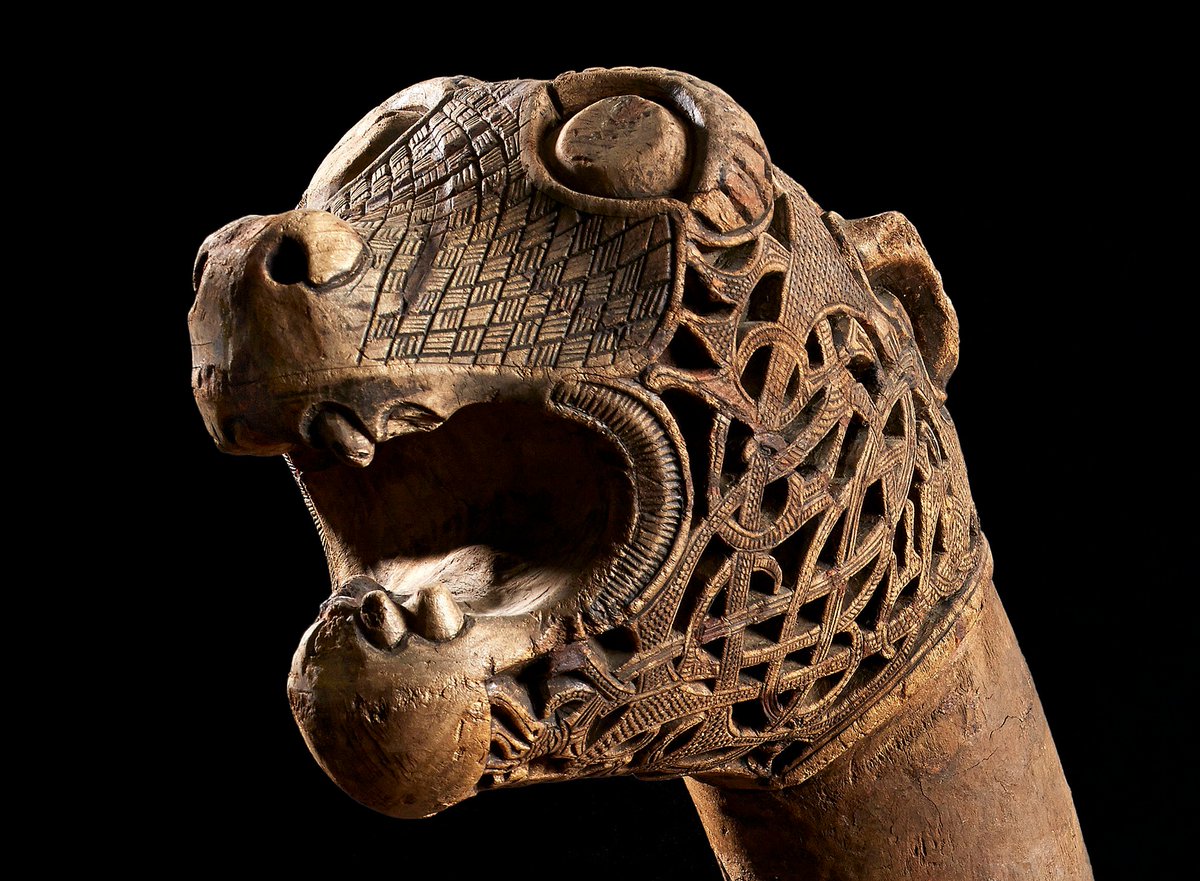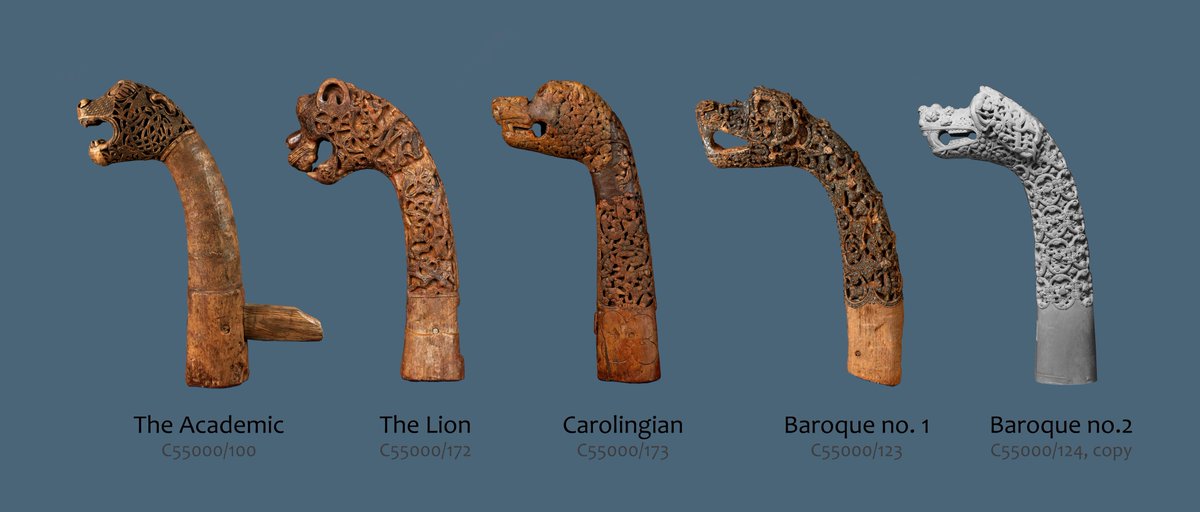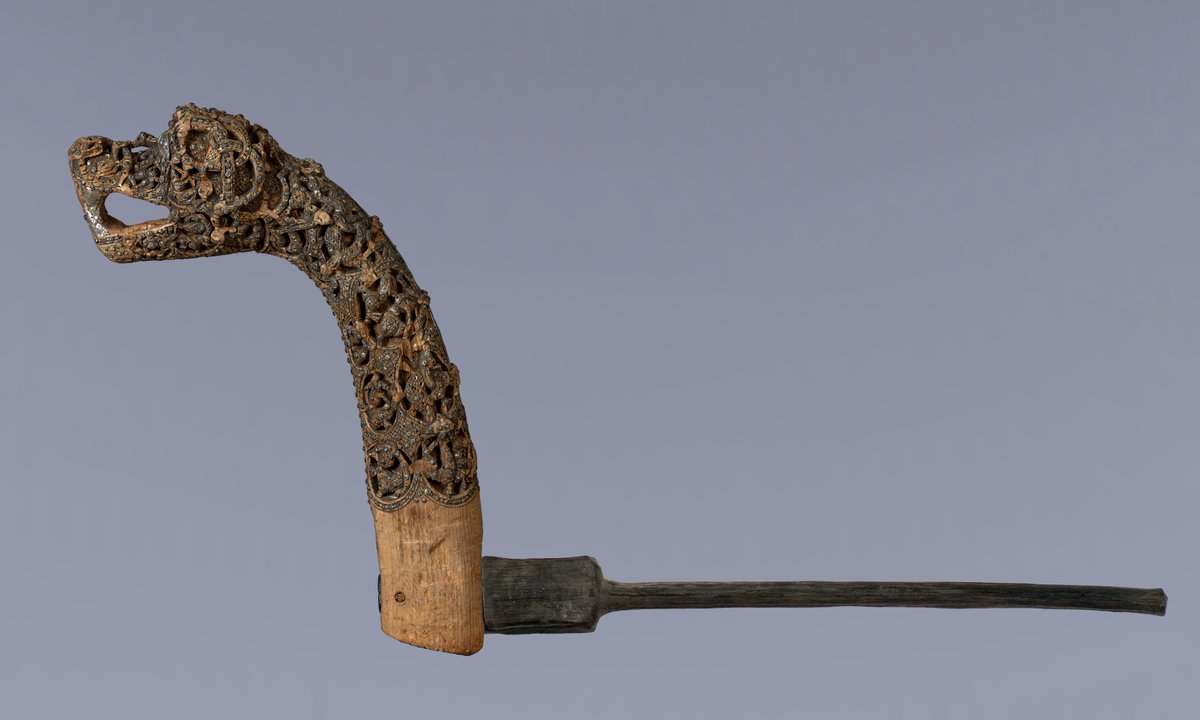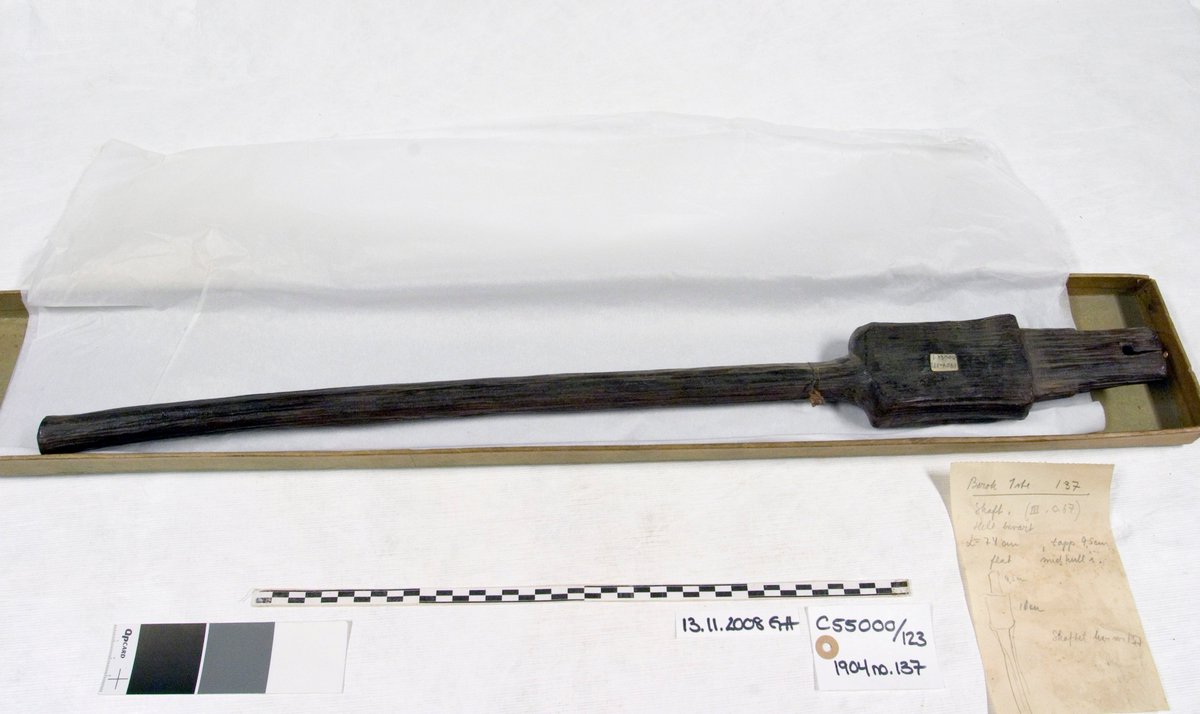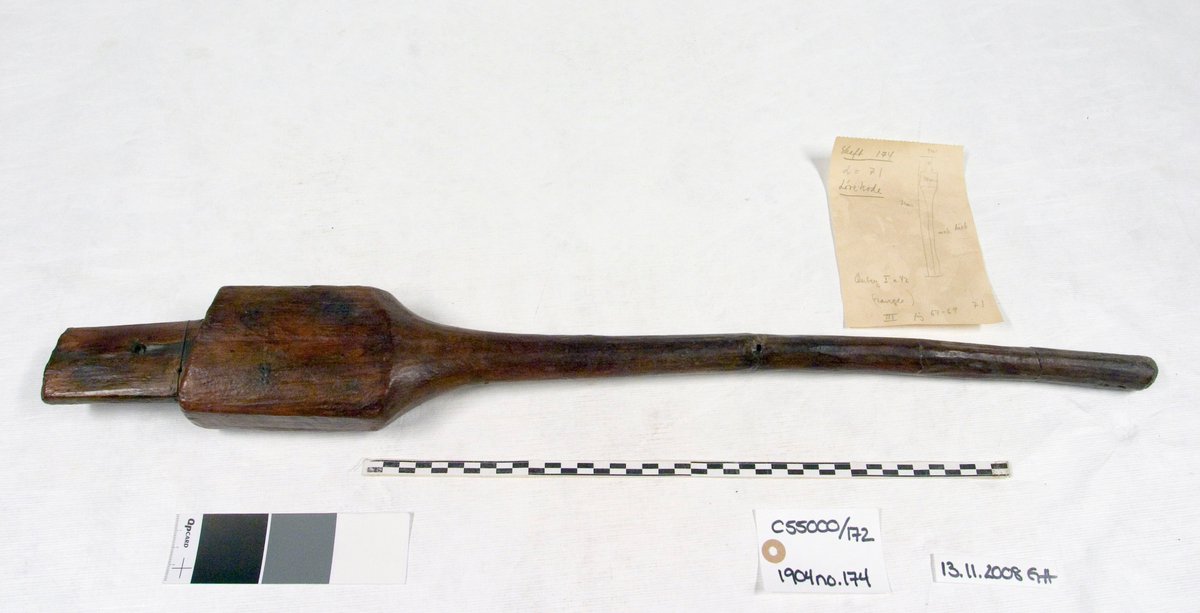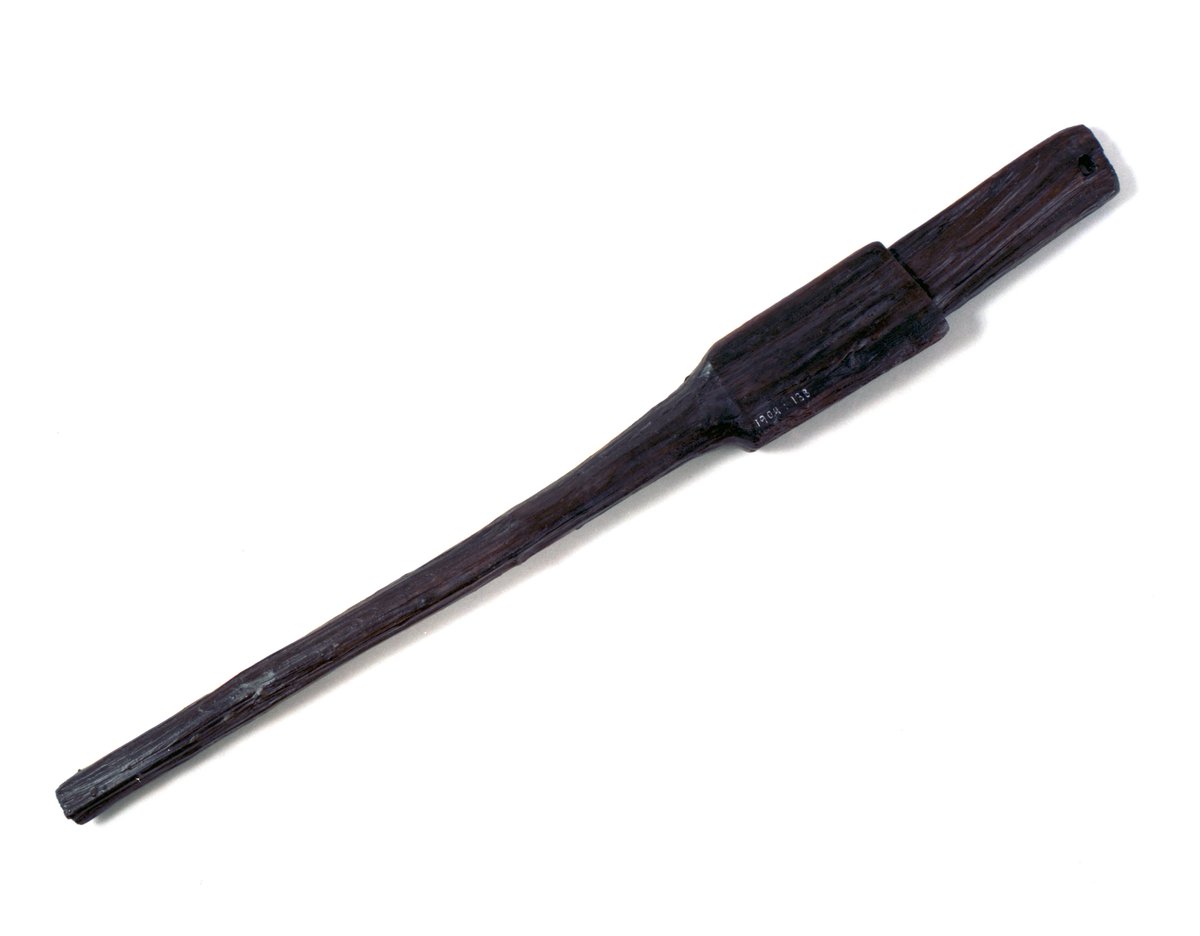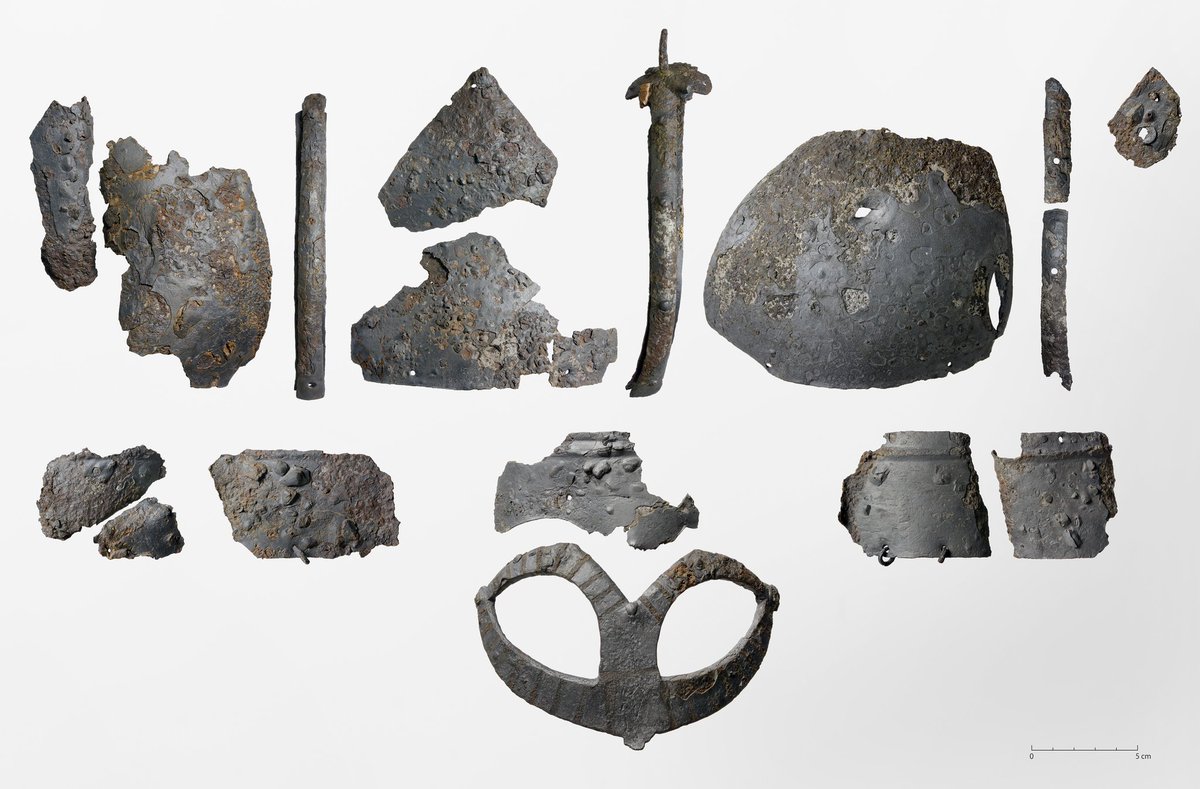The Viking Age mountain grave at #Mesætre in Grimsdalen (Dovre, Norway) was found in 2011 and excavated 2013. The objects from the burial dates it to the middle of the Viking Age, probably the first half of the 10th century. C59044-C59045 @Kulturhistorisk
1/14
1/14

The grave was a cremation patch burial, a flat grave without any cairn or mound. Amongst the burnt fragments of human bone there was also identified pieces from a dog. In addition to bone there was recovered four burnt fragments of decorated antler.
2/14


2/14



One of the most interesting objects from the #Mesætre viking grave is this fire striker. Only 5 cm long and a bit wonky in shape. It's forged from an old saw blade, the teeth still visible along its top. Viking Age saw blade from Stenvold in Trøndelag provided for comparsion
6/14

6/14


To produce sparks a #firestriker needs to be from hardened steel. A proper saw blad would have had the steel quality needed to be reforged into such a striker.
7/14
7/14
A copper alloy ringed pin also furnished the grave. Others of its kind have been found, but of greater comparative interest are rings of exactly the same shape used to suspend sheaths of weapon knives distinctive to Eastern Sweden during the first half of the 10th century.
8/14



8/14




There where 11 arrows found in the grave, unusually well preserved, still having sharpened edges and revealing toolmarks from the drop forging of the blades.
9/14



9/14




More details of one of these arrows.
10/14
10/14
https://twitter.com/VegardVike/status/1307764997179793416?s=20
• • •
Missing some Tweet in this thread? You can try to
force a refresh





















